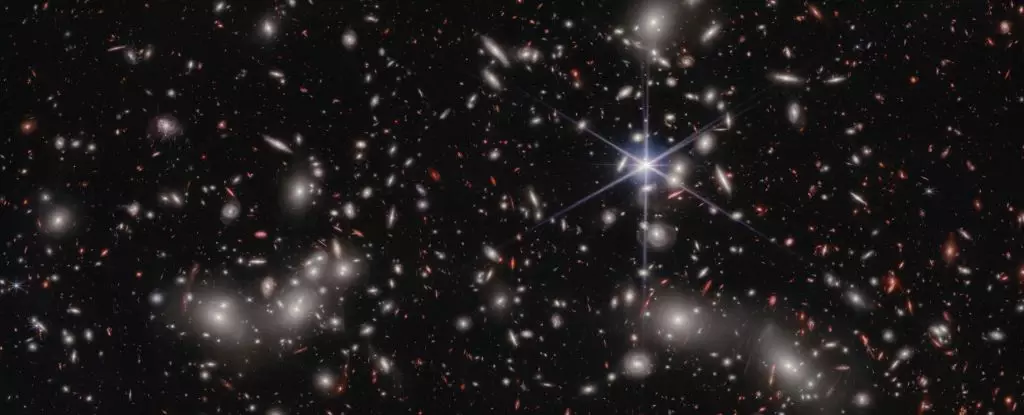The recent data collected from the Hubble and James Webb Space Telescopes has shed light on the dark and formless void of the early Universe. These observations have revealed that small dwarf galaxies played a crucial role in the generation of free-flying photons during the cosmic dawn. These galaxies, which were previously overlooked, were responsible for transforming neutral hydrogen into ionized plasma, ultimately leading to cosmic reionization. This discovery highlights the significance of understanding low-mass galaxies in shaping the history of the Universe.
In the initial stages of the Universe, following the Big Bang, the space was filled with a dense fog of ionized plasma which prevented light from penetrating through. However, as the Universe cooled down, neutral hydrogen gas began to form, paving the way for the birth of the first stars. The radiation emitted by these stars reionized the gas, allowing light to shine through. By the end of the cosmic dawn, approximately 1 billion years after the Big Bang, the Universe was entirely reionized, bringing light to the cosmos.
Contrary to previous assumptions, recent observations from the James Webb Space Telescope indicate that dwarf galaxies played a more significant role in reionization than initially thought. The observations focused on a galaxy cluster known as Abell 2744, utilizing the cosmic lens formed by the cluster to magnify distant light and study tiny dwarf galaxies near the cosmic dawn. The detailed spectra obtained from these galaxies revealed that dwarf galaxies were not only more abundant than large galaxies but also emitted a substantial amount of ionizing radiation, far exceeding expectations.
Read More: The Advancement of Portable Masers in Technology
The collective output of these dwarf galaxies was found to be four times the ionizing radiation typically associated with larger galaxies, indicating their immense impact during the early stages of the Universe. Despite their small size, these low-mass galaxies were identified as prolific producers of energetic radiation, capable of transforming the entire state of the cosmos. This discovery provides compelling evidence for the vital role played by dwarf galaxies in reionizing the Universe.
While these findings represent a significant advancement in our understanding of the cosmic dawn, further research is necessary to validate the results across a broader range of galactic populations. By studying additional cosmic lens regions and expanding the sample size, researchers aim to gain a comprehensive understanding of the role of dwarf galaxies in reionization. The James Webb Space Telescope has opened up new possibilities for exploring the previously uncharted territories of the early Universe, offering unprecedented insights into the evolution of the cosmos.
The newfound importance of dwarf galaxies in the cosmic dawn challenges existing theories and underscores the need for continued exploration and investigation. By unraveling the mysteries of the Universe’s early stages, we not only expand our knowledge of cosmic evolution but also gain a deeper appreciation for the complex processes that shaped the world we inhabit today.


Leave a Reply